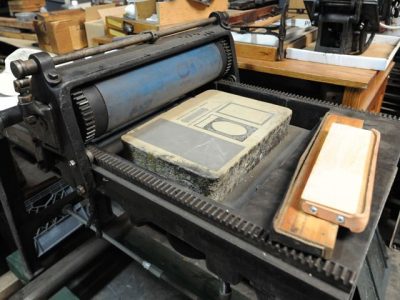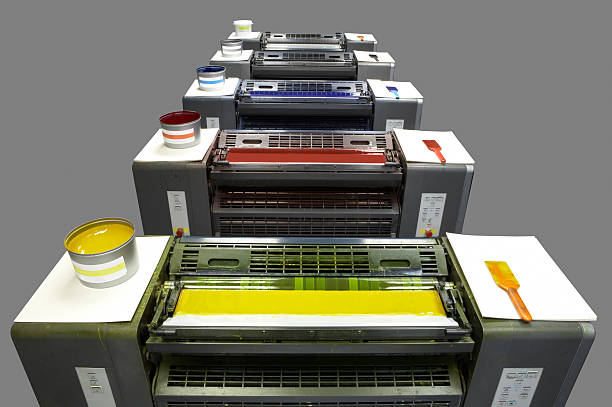A Comprehensive Guide to Comprehending Litho Printing Strategies
The world of litho printing, a method stemming from the late 18th century, is a remarkable blend of history, advancement, scientific research and art. This detailed guide will certainly unravel the intricacies of this printing method, from the make-up of litho inks to the obstacles faced in contemporary applications. As we venture right into the complexities of lithography, the importance of automation and sustainability in ensuring its future importance comes to be increasingly clear. Remain with us as we journey right into the captivating world of litho printing.
The Historical Advancement of Litho Printing
The historic trajectory of litho printing, a critical development in the world of interaction, is an exciting tale of human resourcefulness. Birthed in the late 18th century by Alois Senefelder, this strategy was originally an affordable approach of releasing theatrical works. Lithography, originated from the Greek words for 'stone' and 'to write', made use of a smooth rock surface area to transfer images onto paper. The procedure developed with the arrival of the rotating press, which greatly increased performance (litho printing). In the 20th century, the technology of countered lithography reinvented the industry, allowing for mass manufacturing of top quality prints. Each stage of litho printing's evolution showcases humanity's unrelenting search of performance and top quality in aesthetic communication.
Decoding the Scientific Research Behind Litho Printing Inks
Progressing in the exploration of litho printing methods, the focus currently moves to the science behind litho printing inks. The composition of these inks, their drying process, and color mixing strategies create the backbone of this complex art kind. Comprehending these components is critical to understanding the craft and attaining the wanted print outcomes.
Composition of Litho Inks
In lithographic printing, the essential duty of litho inks can not be overstated. Pigments, the color-providing aspects, are carefully ground bits put on hold in the car, a liquid that brings the pigment onto the printing surface. Each element plays a critical component in the final print's high quality, making the exact formula of litho inks an elaborate scientific research.
Ink Drying Refine
From the composition of litho inks, focus transforms to the remarkable procedure of ink drying. 2 primary methods are made use of in litho printing: oxidative drying out and absorption. Absorption, on the other hand, includes the ink seeping right into the paper fibers, which is a quicker process however can lead to much less vivid shades.
Shade Mixing Strategies
While the drying out procedure plays a vital duty in litho printing, the science of shade mixing strategies holds equal relevance. This is an intricate procedure that entails the cautious mixing of primary shades: cyan, magenta, and yellow, in varying proportions to attain a broad selection of shades. The enhancement of black ink, called 'key', assists in regulating the intensity and depth of the shades. The science behind litho printing inks additionally takes into consideration the openness of the ink, which affects just how shades overlay and mix. To accomplish a reliable color mix, print experts must also recognize the intricacies of ink behavior, shade theory, and the physical properties of the substrate on which the ink is used.
The Art and Style Elements in Litho Printing
Litho printing breathes life right into art and layout via its unique components. The procedure involves creating a photo on a lithographic sedimentary rock plate or steel plate with a smooth surface. The photo is after that published onto a medium, usually paper, by moving the ink from the plate. What collections litho publishing apart is its capacity to reproduce detailed layouts with high integrity, making the outcome nearly the same to the initial artwork. This is attained with the use of various line strategies such as cross-hatching, hatching, and stippling, which enable a series of tonal effects. Litho printing accommodates a selection of shades, making it possible for artists to develop vibrant and lively prints. This mix of precision and convenience makes litho printing a recommended selection for lots of artists and developers.
Modern Applications of Litho Printing Techniques
Litho printing methods have actually discovered extensive usage in the modern business industry. Its impact and significance proceed to grow with the advent of new innovations and innovations in the field. This section will explore these modern applications and the transformative role they play in the printing market.
Commercial Litho Printing Utilizes
In today's electronic age, one might ask yourself about the significance of traditional printing approaches. Litho printing remains an essential component of the business industry. High-volume printing jobs, such as the production of books, newspapers, and product packaging, rely upon litho printing for its ability to provide premium image quality and expense efficiency. The procedure, which involves moving a tattooed picture from a plate onto a rubber blanket and after that to the printing surface, provides unrivaled consistency. This makes it excellent for tasks requiring a big print run. Litho printing additionally offers a wide color range, remarkable to that of electronic printing. This makes it the best option for projects that require vibrant, premium color reproduction.
Innovations in Litho Printing
Pushing the limits of standard methods, contemporary developments have fueled a host of technologies in litho printing. These advancements have not only improved the top quality and effectiveness of litho prints yet additionally expanded its application scope. One popular advancement is electronic litho printing, which incorporates the merits of digital technology with litho's high-quality outcome. This crossbreed model offers faster configuration times, lowered waste, and makes it possible for on-demand printing. An additional noteworthy development is the introduction of eco-friendly inks. These inks, made from veggie or soy-based options, have dramatically minimized the industry's ecological effect. litho printing. Additionally, the advancement of advanced plate modern technology has streamlined the printing procedure, resulting in sharper images and enhanced color integrity. These developments highlight the long-lasting relevance of litho printing read the full info here in the modern world.
Exploring the Refine of Litho Printing: Detailed

Difficulties and Solutions in Contemporary Litho Printing

In spite of the accuracy and tradition that litho printing happily supports, it is not without its set of modern difficulties. The most widespread problems include the high preliminary setup price, trouble in printing variable information, and ecological issues due to chemical usage. Nevertheless, services are becoming technology advances. Digital litho printing enables cost-effective brief runs and easy personalization, attending to the problem of variable data. Environmentally-friendly inks and more secure plate-making procedures reduce ecological concerns. Furthermore, advancements in automation have lowered labor costs, additionally democratizing the lithography process. Hence, while there are challenges, the litho printing read here market is proactively adjusting to meet them head-on, ensuring its importance in the future.
Verdict
Finally, litho printing, with its abundant history and scientific details, holds a substantial area in the print sector. As the guide reveals, it's a synthesis of art and technology, with modern-day improvements ensuring its relevance. The sector deals with challenges that call for ingenious services, with an emphasis on automation and sustainability. The future of litho printing rests on its capability to adapt to these transforming needs, verifying its long-lasting value in a developing market.

Comments on “Unique Designs Enhanced Through litho printing”